- Details
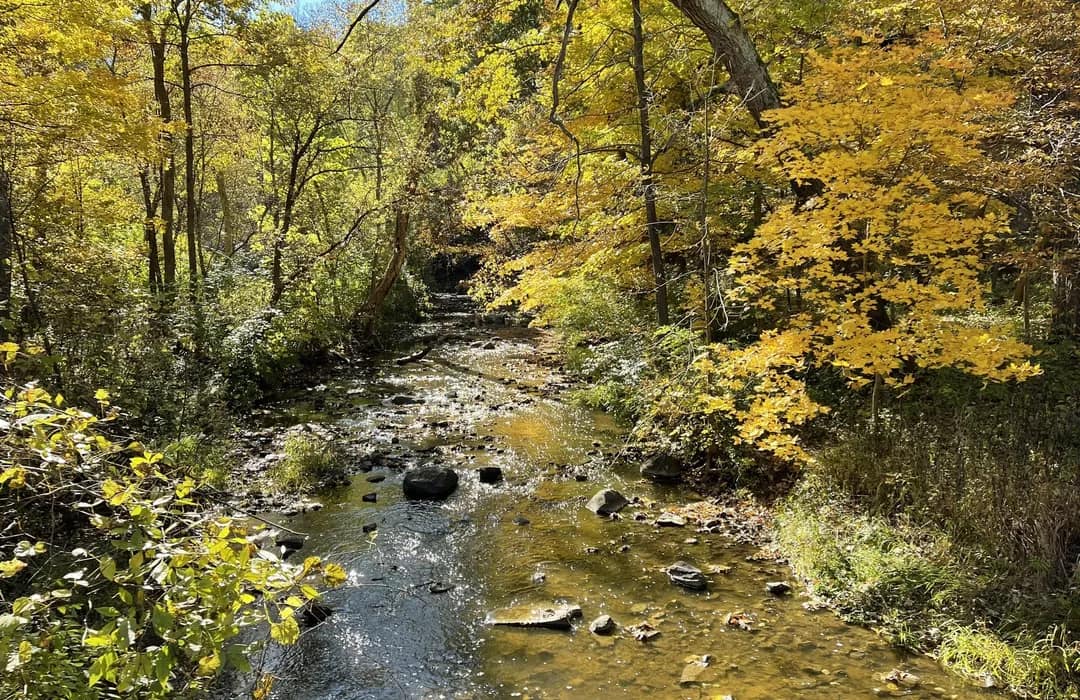
Illinois has plenty to offer – whether it is the rich culture, delicious food or scenery, there is something for everyone. It is no secret that fall is around the corner with the trees starting to turn to beautiful hues of yellows and reds, displaying the natural beauty of our state. This week, we have compiled a list of the 10 BEST hiking trails to visit in the fall months!
- Starved Rock and Sandstone Point Overlook Trail: Starved Rock State Park (Oglesby)
- Dells Canyon and Bluff Trail: Matthiessen State Park (Oglesby)
- Garden of the Gods Observation Trail: Shawnee National Forest (Near Harrisburg)
- Little Grand Canyon Trail: Shawnee National Forest (Pomona)
- Waterfall Glen Trail: Waterfall Glen Forest Preserve (Darien)
- Eagle Cliff Overlook and La Salle Canyon: Starved Rock State Park (Oglesby)
- Sag Valley Yellow Trail Loop: Swallow Cliff Woods (Near Palos Park)
- Saint Louis Canyon Trail: Starved Rock State Park (Oglesby)
- Pontiac Canyon, Wildcat Canyon and Beehive Overlook: Starved Rock State Park (Oglesby)
- Indian Point Trail: Garden of the Gods Wilderness (Near Harrisburg)
Starved Rock State Park has several locations on this list and brings in an estimated 3 million visitors annually from all over the world, cementing its place as one of the crown jewels of Illinois for its beauty. With an impressive 270 trails that total more than 700 miles in Illinois, we hope you have the chance to visit one of these hiking trails and enjoy the nice weather!
- Details
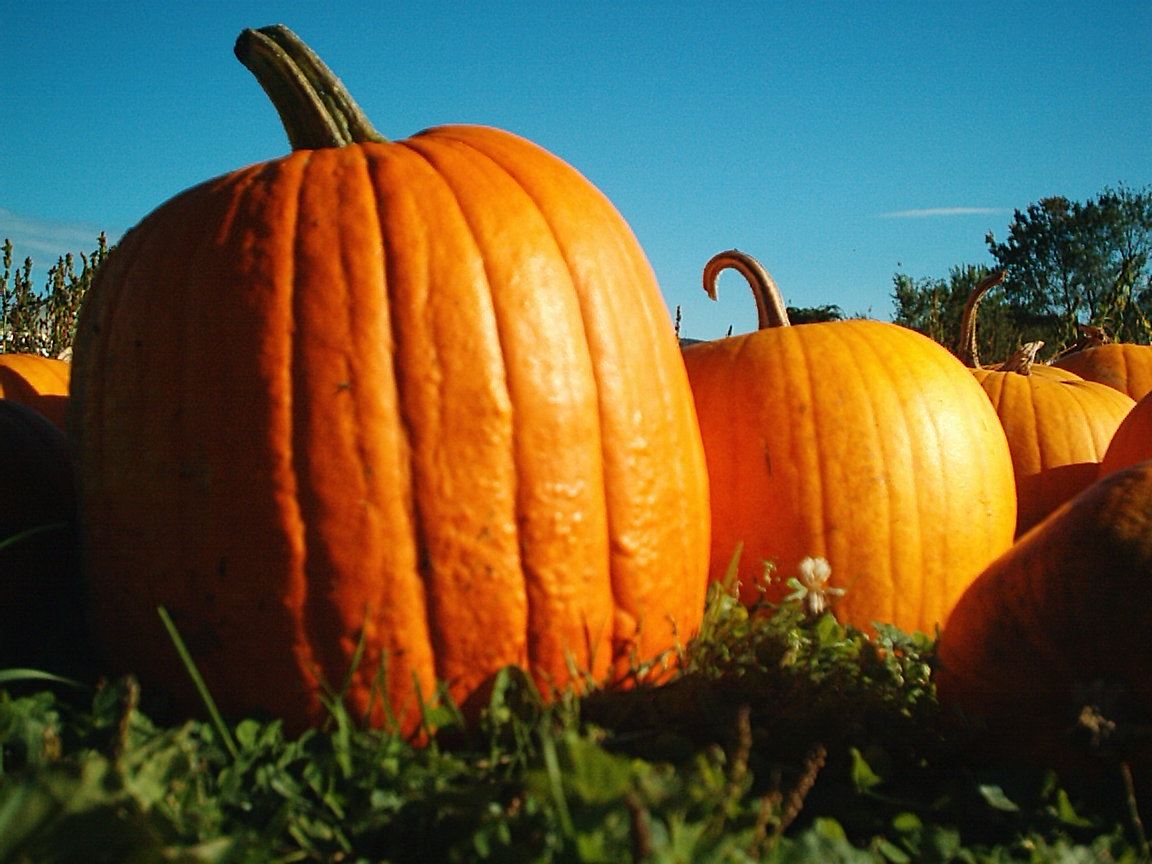
National Farmer’s Day serves to honor the hard-working farmers that dedicate their lives to supplying food across the nation. Farmers are responsible for the plowing, sowing, growing and harvesting of crops while maintaining the sustainability of the land and securing the safety of consumers.
In Illinois, farmland accounts for 75% of the total land area equaling 27 million acres. Farms in Illinois are the leading producers of soybeans, corn and swine. Illinois farms also produce other grains, livestock, fruits and vegetables including pumpkins.
In the spirit of the fall season, Illinois is the top pumpkin producing state and has been for many years. The pumpkins grown in Illinois are shipped across the country and are used for all our favorite fall activities such as carving, painting, baking and more. Thanks to Illinois farmers, families can enjoy the best parts of the fall season.
Thank a farmer today!
- Details
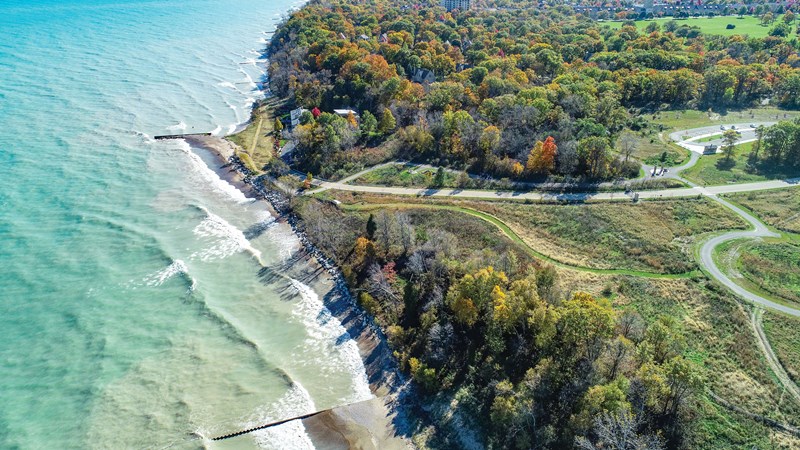 Lake County is home to a beautiful forest preserve bordering Lake Michigan with a unique history. When renowned landscape designer O.C. Simonds came up with the plans for the Fort Sheridan army base in 1889, he met both the military’s needs while also making breathtaking views of Lake Michigan a priority. The site of the historic U.S. Army post (1887–1993) holds national significance for its landscape and architecture design, and for the preparation and training of American soldiers for military service. In 1982, Fort Sheridan was designated a National Historic Landmark by the United States Secretary of the Interior. Fort Sheridan joins 2,540 sites across the country recognized as places that possess exceptional value and quality in illustrating or interpreting the heritage of the United States. Currently, Ninety-four buildings at the Fort are designated National Historic Landmarks. The Fort was officially closed in 1993 and the land was transferred to the Lake County Forest Preserve.
Lake County is home to a beautiful forest preserve bordering Lake Michigan with a unique history. When renowned landscape designer O.C. Simonds came up with the plans for the Fort Sheridan army base in 1889, he met both the military’s needs while also making breathtaking views of Lake Michigan a priority. The site of the historic U.S. Army post (1887–1993) holds national significance for its landscape and architecture design, and for the preparation and training of American soldiers for military service. In 1982, Fort Sheridan was designated a National Historic Landmark by the United States Secretary of the Interior. Fort Sheridan joins 2,540 sites across the country recognized as places that possess exceptional value and quality in illustrating or interpreting the heritage of the United States. Currently, Ninety-four buildings at the Fort are designated National Historic Landmarks. The Fort was officially closed in 1993 and the land was transferred to the Lake County Forest Preserve.
A scenic destination, this forest preserve offers a variety of opportunities for recreation at the lakeshore. Fort Sheridan is one of only a few places in Lake County that offers free public access to Lake Michigan and an awe-inspiring lake overlook perched on a 70-foot-high bluff. Known for its pristine natural areas and excellent birdwatching, Fort Sheridan is home to several rare species not found elsewhere in the region. The preserve's savanna, ravines and lakefront location allow visitors to observe one of North America’s busiest flyways for migratory birds. At least 236 species of birds have been seen here.
- Details
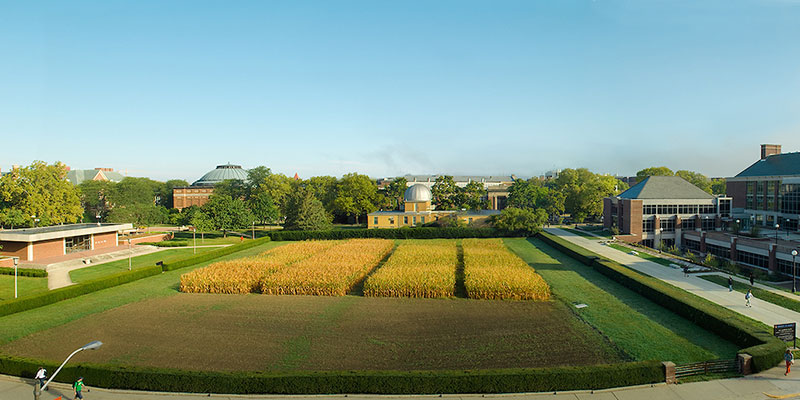 The College of Agricultural Sciences on the campus of the University of Illinois Urbana-Champaign is home to the oldest and largest experimental crop field in the United States and the second oldest in the entire world. The plots were established in 1876 and continue to be used today, although now with three plots of much-reduced size, instead of the original ten half-acre lots. Some of the land formally included in the plots was used to build the campus observatory or tuned into green space. Now only three plots remain, but they are protected as a National Historic Landmark. The Morrow Plots is one of two such landmarks on campus, achieving its status in 1968. The neighboring observatory also achieved the status of National Historic Landmark in 1989.
The College of Agricultural Sciences on the campus of the University of Illinois Urbana-Champaign is home to the oldest and largest experimental crop field in the United States and the second oldest in the entire world. The plots were established in 1876 and continue to be used today, although now with three plots of much-reduced size, instead of the original ten half-acre lots. Some of the land formally included in the plots was used to build the campus observatory or tuned into green space. Now only three plots remain, but they are protected as a National Historic Landmark. The Morrow Plots is one of two such landmarks on campus, achieving its status in 1968. The neighboring observatory also achieved the status of National Historic Landmark in 1989.
The Morrow Plots were started in 1876 by Professor Manly Miles, who established three half-acre fields with different crop schemes. These were expanded to 10 plots in 1879 by George E. Morrow. At first, record keeping was not of the highest caliber, but by the turn of the 20th century, it was clear that crop rotation was a useful component in preventing the depletion of soil quality. In the early 20th century, the number of plots were reduced, and their size was also reduced, in order to facilitate expansion of the university facilities. The northernmost plots are the only ones that date to Miles' 1876 establishment-his other plots are now occupied by the University of Illinois Observatory.
Alumni of the University of Illinois Urbana-Champaign will be pleased to learn that the Morrow plots were instrumental in in gaining knowledge on crop rotation, soil nutrient depletion, and the effects of synthetic and natural fertilizers. With crops being consistently grown in the same place for well over 100 years, research and records on the Morrow Plots continue to provide valuable information for a variety of topics, including soil carbon sequestration and long-term effects of fertilizers on soil bacteria. Corn, wheat, soybeans and other crops are still grown on the plots to this day.
- Details
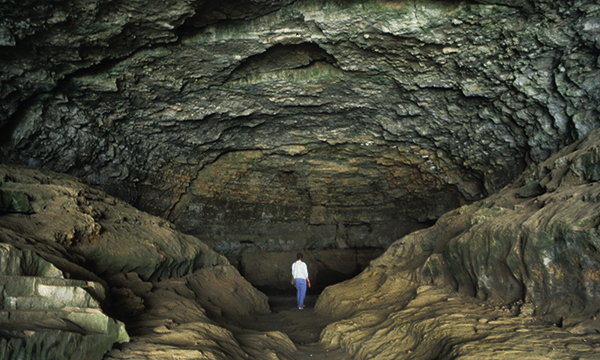 After being closed for a decade, Illinois Caverns State Natural Area is back open to the public. Located in Monroe County, this underground wonder includes an impressive array of cave formations like stalactites, stalagmites and more.
After being closed for a decade, Illinois Caverns State Natural Area is back open to the public. Located in Monroe County, this underground wonder includes an impressive array of cave formations like stalactites, stalagmites and more.
Illinois Caverns is the only commercially operated cave in Illinois. It originally opened in 1901 and passed through various owners before being sold to the state in 1985.
Due to concerns about white-nose syndrome, a disease that effects bats, the caves were closed to the public in 2011. Recent research, however, showed that human visitation did not promote the spread of the disease, leading the Department of Natural Resources to reopen the park to visitors this summer.



